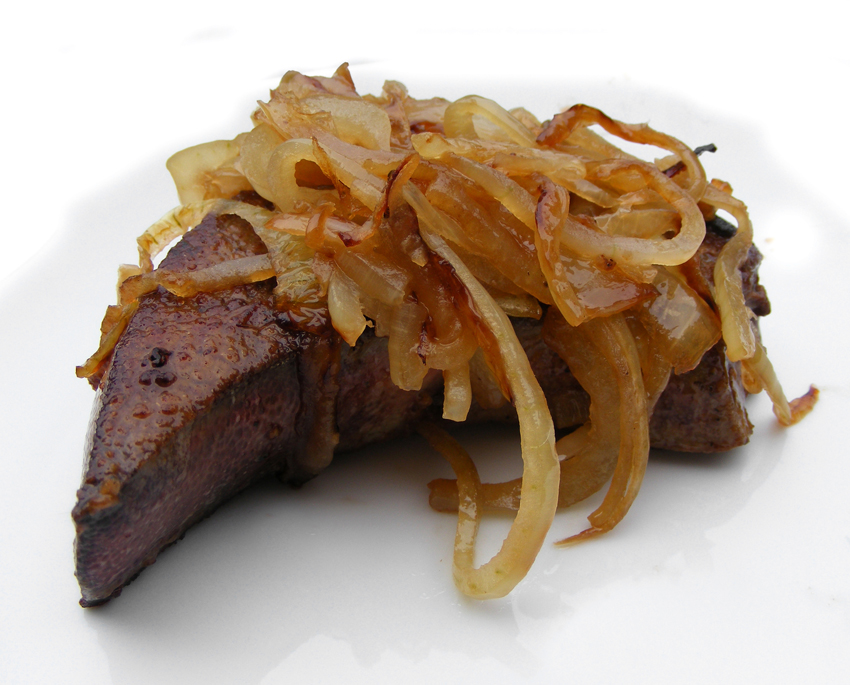
Nutritional value per 100 g (3.5 oz)
561 kJ (134 kcal)
Quantity
Quantity
Nutrition[edit]
Animal livers are rich in iron, copper, the B vitamins and preformed vitamin A. Daily consumption of liver can be harmful; for instance, vitamin A toxicity has been proven to cause medical issues to babies born of pregnant mothers who consumed too much vitamin A.[3] For the same reason, consuming the livers of some species like polar bears, dogs, or moose is unsafe. A single serving of beef liver exceeds the tolerable upper intake level of vitamin A.[4] 100 g cod liver contains 5 mg of vitamin A and 100 µg of vitamin D.[5] Liver contains large amounts of vitamin B12, and this was one of the factors that led to the discovery of the vitamin.[6]
Etymology[edit]
From Middle English liver, from Old English lifer, from Proto-Germanic *librō, from Proto-Indo-European *leyp- "to smear, smudge, stick", from Proto-Indo-European *ley- "to be slimy, be sticky, glide". Cognate with Saterland Frisian Lieuwer "liver", West Frisian lever "liver", Dutch lever "liver", German Leber "liver", Danish , Norwegian and Swedish language lever "liver" the last three from Old Norse lifr "liver".
In the Romance languages, the anatomical word for "liver" (French foie, Italian fegato, Spanish hígado, etc.) derives not from the Latin anatomical term, jecur, but from the culinary term ficatum, literally "stuffed with figs", referring to the livers of geese that had been fattened on figs (foie gras).[7]
Preparation[edit]
Liver can be baked, boiled, broiled, fried, stir-fried, or eaten raw (asbeh nayeh or sawda naye in Lebanese cuisine, liver sashimi). In many preparations, pieces of liver are combined with pieces of meat or kidneys, like in the various forms of Middle Eastern mixed grill (e.g. meurav Yerushalmi). Spreads or pâtés made from liver have various names, including liver pâté, pâté de foie gras, chopped liver, liverwurst, liver spread, and Braunschweiger. Other liver sausages include mazzafegato or salsiccia matta. A traditional South African delicacy, namely skilpadjies, is made of minced lamb's liver wrapped in netvet (caul fat), and grilled over an open fire.
Fish liver[edit]
Some fish livers are valued as food, especially the stingray liver. It is used to prepare delicacies, such as poached skate liver on toast in England,[8] as well as the beignets de foie de raie and foie de raie en croute in French cuisine.[9] Cod liver (usually tinned in its oil and served seasoned) is a popular spread for bread or toast in several European countries. In Russia, it is served with potatoes. Cod liver oil is commonly used as a dietary supplement. Liver of burbot is eaten in Finland: it is common for fish vendors and supermarket fish aisles to sell these fish with liver and roe sacks still attached. These parts are often eaten boiled or added to burbot soup. Burbot and its liver are a traditional winter food.[10]
Traditions[edit]
Pig liver is a traditional food of immigrant Okinawans in Hawaii. It used to be eaten on New Year's Eve.[15]